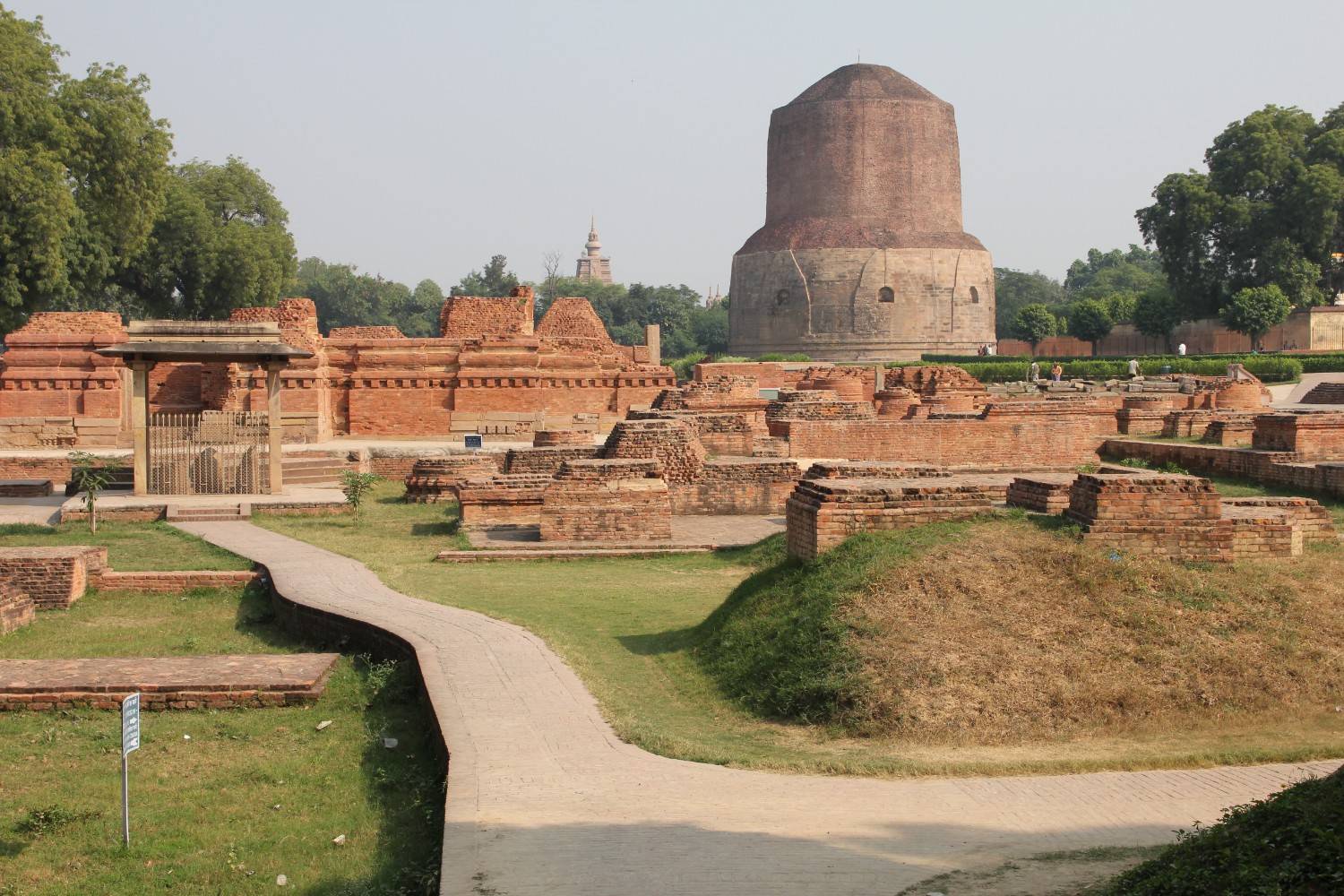Exploring the Spiritual Significance of Dhamek Stupa in Sarnath

In the sacred land of Sarnath, where the teachings of Buddhism were first expounded by Lord Buddha, stands the majestic Dhamek Stupa, a symbol of spiritual enlightenment and Buddhist heritage. Surrounded by serene landscapes and echoes of ancient wisdom, Dhamek Stupa holds profound spiritual significance for devotees and pilgrims alike. In this exploration, we delve into the spiritual depths of Dhamek Stupa, unraveling its timeless significance and enduring legacy in the heart of Sarnath.
Historical Background:
Dhamek Stupa stands as a testament to the rich tapestry of Sarnath's history, dating back over two millennia. Believed to have been constructed in the 5th or 6th century CE, Dhamek Stupa commemorates the spot where Lord Buddha is said to have delivered his first sermon, known as the Dhammacakkappavattana Sutta, or "Setting in Motion the Wheel of Dharma." This momentous event marked the beginning of the Buddhist Sangha and laid the foundation for the spread of Buddhism across the Indian subcontinent and beyond.
Symbolism and Architecture:
The architecture of Dhamek Stupa embodies the essence of Buddhist philosophy and symbolism, with its towering spire, intricate carvings, and sacred relics. Rising majestically into the sky, the stupa symbolizes the axis mundi, the cosmic axis around which the universe revolves, and serves as a focal point for meditation and contemplation. The circular base of the stupa represents the wheel of Dharma, symbolizing the teachings of Buddha and the path to enlightenment.
Spiritual Significance:
For Buddhists, Dhamek Stupa holds profound spiritual significance as a site of pilgrimage and veneration. Devotees from around the world visit Sarnath to pay homage to the sacred spot where Lord Buddha delivered his first sermon, seeking inspiration, guidance, and blessings on their spiritual journey. The tranquil ambiance of Dhamek Stupa, coupled with its historical importance, creates an atmosphere of reverence and introspection, inviting pilgrims to connect with the teachings of Buddha and experience moments of profound insight and realization.
Cultural Heritage and Conservation:
Beyond its spiritual significance, Dhamek Stupa is a custodian of cultural heritage, preserving the legacy of Buddhism and the history of Sarnath for future generations. Efforts to conserve and protect Dhamek Stupa have been ongoing, with measures taken to ensure its structural integrity and safeguard its sacred relics. Through archaeological research, restoration projects, and educational initiatives, authorities strive to promote awareness of Dhamek Stupa's cultural importance and foster a sense of stewardship among visitors and locals alike.
Conclusion:
As we explore the spiritual significance of Dhamek Stupa in Sarnath, we are reminded of the enduring legacy of Buddhism and the timeless wisdom of Lord Buddha. Standing as a silent sentinel amidst the sands of time, Dhamek Stupa beckons seekers of truth and wisdom to its hallowed grounds, offering solace, inspiration, and enlightenment to all who tread its sacred path. In the tranquil embrace of Dhamek Stupa, pilgrims find a sanctuary of peace and serenity, where the teachings of Buddha continue to resonate with the hearts and minds of humanity, guiding us on the path to spiritual awakening and liberation.
